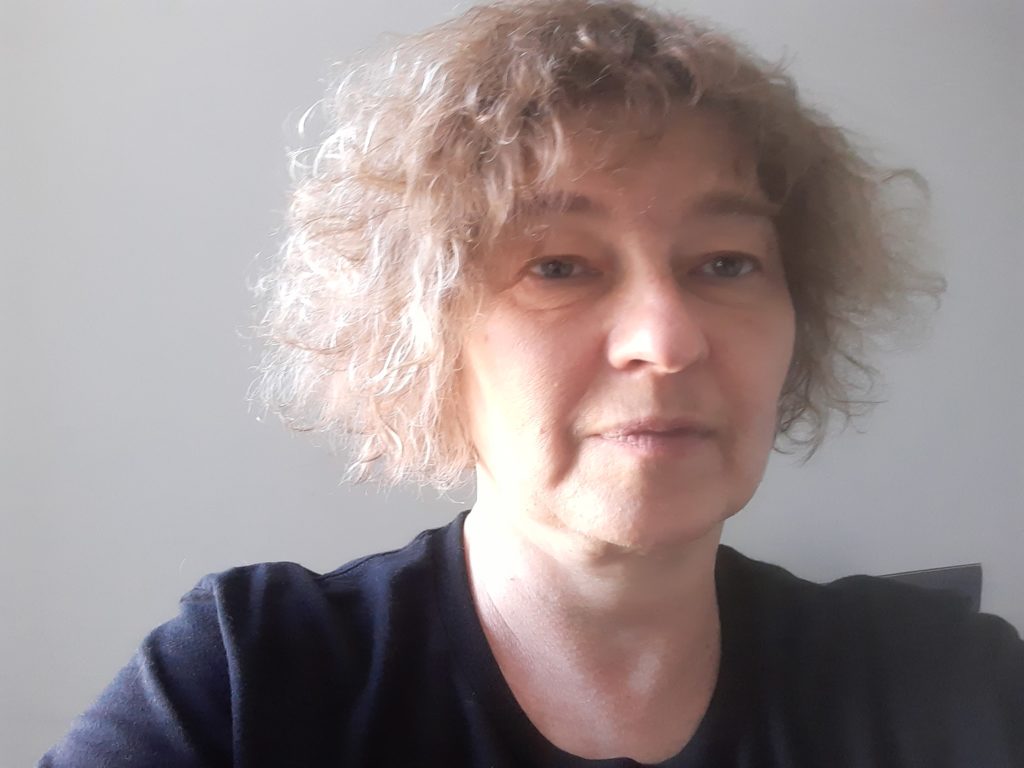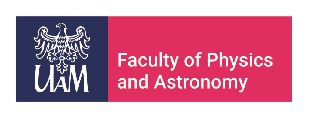2025
|
| 7. | Rob den Teuling, Ritesh Das, Artem V Bondarenko, Elena V. Tartakovskaya, Gerrit E W Bauer, Yaroslav M Blanter Spin waves in the bilayer van der Waals magnet CrSBr Phys. Rev. B, 112 , pp. 144442, 2025. Links | BibTeX @article{w4xn-2yff,
title = {Spin waves in the bilayer van der Waals magnet CrSBr},
author = {Rob den Teuling and Ritesh Das and Artem V Bondarenko and Elena V. Tartakovskaya and Gerrit E W Bauer and Yaroslav M Blanter},
url = {https://link.aps.org/doi/10.1103/w4xn-2yff},
doi = {10.1103/w4xn-2yff},
year = {2025},
date = {2025-10-01},
journal = {Phys. Rev. B},
volume = {112},
pages = {144442},
publisher = {American Physical Society},
keywords = {},
pubstate = {published},
tppubtype = {article}
}
|
| 6. | Rob den Teuling, Ritesh Das, Artem V Bondarenko, Elena V. Tartakovskaya, Gerrit E W Bauer, Yaroslav M Blanter Dipolar-exchange spin waves in thin bilayers Low Temperature Physics, 51 (8), pp. 998-1003, 2025, ISSN: 1063-777X. Abstract | Links | BibTeX @article{10.1063/10.0038642,
title = {Dipolar-exchange spin waves in thin bilayers},
author = {Rob den Teuling and Ritesh Das and Artem V Bondarenko and Elena V. Tartakovskaya and Gerrit E W Bauer and Yaroslav M Blanter},
url = {https://doi.org/10.1063/10.0038642},
doi = {10.1063/10.0038642},
issn = {1063-777X},
year = {2025},
date = {2025-01-01},
journal = {Low Temperature Physics},
volume = {51},
number = {8},
pages = {998-1003},
abstract = {We investigate the dipolar-exchange spin wave spectrum in thin ferromagnetic bilayers with in-plane magnetization, incorporating interlayer exchange coupling and intra- and interlayer dipolar interactions. In the continuum approximation, we analyze the nonreciprocity of propagating magnetic stray fields emitted by spin waves as a function of the relative orientation of the layer magnetizations that are observable by magnetometry of synthetic antiferromagnets or weakly coupled type-A van der Waals antiferromagnetic bilayers as a function of an applied magnetic field.},
keywords = {},
pubstate = {published},
tppubtype = {article}
}
We investigate the dipolar-exchange spin wave spectrum in thin ferromagnetic bilayers with in-plane magnetization, incorporating interlayer exchange coupling and intra- and interlayer dipolar interactions. In the continuum approximation, we analyze the nonreciprocity of propagating magnetic stray fields emitted by spin waves as a function of the relative orientation of the layer magnetizations that are observable by magnetometry of synthetic antiferromagnets or weakly coupled type-A van der Waals antiferromagnetic bilayers as a function of an applied magnetic field. |
| 5. | K Y Guslienko, Elena V. Tartakovskaya Hopf index of the toroidal magnetic hopfions in cylindrical and spherical dots Low Temperature Physics, 51 (6), pp. 695-699, 2025, ISSN: 1063-777X. Abstract | Links | BibTeX @article{10.1063/10.0036746,
title = {Hopf index of the toroidal magnetic hopfions in cylindrical and spherical dots},
author = {K Y Guslienko and Elena V. Tartakovskaya},
url = {https://doi.org/10.1063/10.0036746},
doi = {10.1063/10.0036746},
issn = {1063-777X},
year = {2025},
date = {2025-01-01},
journal = {Low Temperature Physics},
volume = {51},
number = {6},
pages = {695-699},
abstract = {Topologically non-trivial 3D magnetization textures in the restricted curvilinear geometries are considered. 3D topological charges (the Hopf indices) are calculated for a particular case of 3D topological magnetic solitons, the toroidal hopfions in cylindrical and spherical ferromagnetic dots. The calculation method is based on the theory of toroidal hopfions developed within the classical field theory for infinite media. We exploited the property of the toroidal hopfions that the Hopf index density in any curvilinear coordinate system can be expressed as a Jacobian of the transformation from the toroidal coordinates to new coordinates, which match to the magnetic particle symmetry. The calculated Hopf indices are not integer and approach integer values increasing the dot sizes.},
keywords = {},
pubstate = {published},
tppubtype = {article}
}
Topologically non-trivial 3D magnetization textures in the restricted curvilinear geometries are considered. 3D topological charges (the Hopf indices) are calculated for a particular case of 3D topological magnetic solitons, the toroidal hopfions in cylindrical and spherical ferromagnetic dots. The calculation method is based on the theory of toroidal hopfions developed within the classical field theory for infinite media. We exploited the property of the toroidal hopfions that the Hopf index density in any curvilinear coordinate system can be expressed as a Jacobian of the transformation from the toroidal coordinates to new coordinates, which match to the magnetic particle symmetry. The calculated Hopf indices are not integer and approach integer values increasing the dot sizes. |
2024
|
| 4. | Krzysztof Szulc, Yulia Kharlan, Pavlo Bondarenko, Elena V. Tartakovskaya, Maciej Krawczyk Impact of surface anisotropy on the spin-wave dynamics in a thin ferromagnetic film Phys. Rev. B, 109 , pp. 054430, 2024. Links | BibTeX @article{PhysRevB.109.054430,
title = {Impact of surface anisotropy on the spin-wave dynamics in a thin ferromagnetic film},
author = {Krzysztof Szulc and Yulia Kharlan and Pavlo Bondarenko and Elena V. Tartakovskaya and Maciej Krawczyk},
url = {https://link.aps.org/doi/10.1103/PhysRevB.109.054430},
doi = {10.1103/PhysRevB.109.054430},
year = {2024},
date = {2024-02-01},
journal = {Phys. Rev. B},
volume = {109},
pages = {054430},
publisher = {American Physical Society},
keywords = {},
pubstate = {published},
tppubtype = {article}
}
|
2023
|
| 3. | Dariia Popadiuk, Elena V. Tartakovskaya, Maciej Krawczyk, Kostyantyn Guslienko Emergent Magnetic Field and Nonzero Gyrovector of the Toroidal Magnetic Hopfion physica status solidi (RRL) – Rapid Research Letters, n/a (n/a), pp. 2300131, 2023. Abstract | Links | BibTeX @article{https://doi.org/10.1002/pssr.202300131,
title = {Emergent Magnetic Field and Nonzero Gyrovector of the Toroidal Magnetic Hopfion},
author = {Dariia Popadiuk and Elena V. Tartakovskaya and Maciej Krawczyk and Kostyantyn Guslienko},
url = {https://onlinelibrary.wiley.com/doi/abs/10.1002/pssr.202300131},
doi = {https://doi.org/10.1002/pssr.202300131},
year = {2023},
date = {2023-05-13},
journal = {physica status solidi (RRL) – Rapid Research Letters},
volume = {n/a},
number = {n/a},
pages = {2300131},
abstract = {Magnetic hopfions are localized magnetic solitons with a nonzero 3D topological charge (Hopf index). Herein, an analytical calculation of the magnetic hopfion gyrovector is presented and it is shown that it does not vanish even in an infinite sample. The calculation method is based on the concept of the emergent magnetic field. The particular case of the simplest nontrivial toroidal hopfion with the Hopf index | QH |=1$łeft|right. Q_textĦ łeft|right. = 1$ in the cylindrical magnetic dot is considered and dependencies of the gyrovector components on the dot sizes are calculated. Nonzero hopfion gyrovector is important in any description of the hopfion dynamics within the collective coordinate Thiele's approach.},
keywords = {},
pubstate = {published},
tppubtype = {article}
}
Magnetic hopfions are localized magnetic solitons with a nonzero 3D topological charge (Hopf index). Herein, an analytical calculation of the magnetic hopfion gyrovector is presented and it is shown that it does not vanish even in an infinite sample. The calculation method is based on the concept of the emergent magnetic field. The particular case of the simplest nontrivial toroidal hopfion with the Hopf index | QH |=1$łeft|right. Q_textĦ łeft|right. = 1$ in the cylindrical magnetic dot is considered and dependencies of the gyrovector components on the dot sizes are calculated. Nonzero hopfion gyrovector is important in any description of the hopfion dynamics within the collective coordinate Thiele's approach. |
2022
|
| 2. | Krzysztof Sobucki, Maciej Krawczyk, Elena V. Tartakovskaya, Piotr Graczyk Magnon spectrum of Bloch hopfion beyond ferromagnetic resonance APL Materials, 10 (9), pp. 091103, 2022. Abstract | Links | BibTeX @article{doi:10.1063/5.0100484,
title = {Magnon spectrum of Bloch hopfion beyond ferromagnetic resonance},
author = {Krzysztof Sobucki and Maciej Krawczyk and Elena V. Tartakovskaya and Piotr Graczyk},
url = {https://doi.org/10.1063/5.0100484},
doi = {10.1063/5.0100484},
year = {2022},
date = {2022-09-08},
journal = {APL Materials},
volume = {10},
number = {9},
pages = {091103},
abstract = {With the development of new nanofabrication technologies and measurement techniques, the interest of researchers is moving toward 3D structures and 3D magnetization textures. Special attention is paid to the topological magnetization textures, particularly hopfions. In this paper, we investigate the magnetization dynamics of the hopfion through the numerical solution of the eigenvalue problem. We show that the spectrum of spin-wave modes of the hopfion is much richer than those attainable in ferromagnetic resonance experiments or time-domain simulations reported so far. We identified four groups of modes that differ in the character of oscillations (clockwise or counter-clockwise rotation sense), the position of an average amplitude localization along the radial direction, and different oscillations in the vertical cross section. The knowledge of the full spin-wave spectrum shall help in hopfion identification, understanding of the interaction between spin waves and hopfion dynamics as well as the development of the potential of hopfion in spintronic and magnonic applications.},
keywords = {},
pubstate = {published},
tppubtype = {article}
}
With the development of new nanofabrication technologies and measurement techniques, the interest of researchers is moving toward 3D structures and 3D magnetization textures. Special attention is paid to the topological magnetization textures, particularly hopfions. In this paper, we investigate the magnetization dynamics of the hopfion through the numerical solution of the eigenvalue problem. We show that the spectrum of spin-wave modes of the hopfion is much richer than those attainable in ferromagnetic resonance experiments or time-domain simulations reported so far. We identified four groups of modes that differ in the character of oscillations (clockwise or counter-clockwise rotation sense), the position of an average amplitude localization along the radial direction, and different oscillations in the vertical cross section. The knowledge of the full spin-wave spectrum shall help in hopfion identification, understanding of the interaction between spin waves and hopfion dynamics as well as the development of the potential of hopfion in spintronic and magnonic applications. |
2021
|
| 1. | X. Zhou, Elena V. Tartakovskaya, G. N. Kakazei, A. O. Adeyeye Engineering spin wave spectra in thick Ni80Fe20 rings by using competition between exchange and dipolar fields Phys. Rev. B, 104 , pp. 214402, 2021. Abstract | Links | BibTeX @article{PhysRevB.104.214402,
title = {Engineering spin wave spectra in thick Ni80Fe20 rings by using competition between exchange and dipolar fields},
author = {X. Zhou and Elena V. Tartakovskaya and G. N. Kakazei and A. O. Adeyeye},
url = {https://link.aps.org/doi/10.1103/PhysRevB.104.214402},
doi = {10.1103/PhysRevB.104.214402},
year = {2021},
date = {2021-12-03},
journal = {Phys. Rev. B},
volume = {104},
pages = {214402},
publisher = {American Physical Society},
abstract = {Control of the spin wave dynamics in nanomagnetic elements is very important for the realization of a broad range of novel magnonic devices. Here we study experimentally the spin wave resonance in thick ferromagnetic rings (100 nm) using perpendicular ferromagnetic resonance spectroscopy. Different from what was observed for the continuous film of the same thickness, or from rings with similar lateral dimensions but with lower thicknesses, the spectra of thick patterned rings show a nonmonotonic dependence of the mode intensity on the resonance field for a fixed frequency. To explain this effect, the theoretical approach by considering the dependence of the mode profiles on both the radial and axial coordinates was developed. It was demonstrated that such unusual behavior is a result of the competition between exchange and dipolar fields acting at the spin excitations in the structure under study. The calculations are in a good agreement with the experimental results.},
keywords = {},
pubstate = {published},
tppubtype = {article}
}
Control of the spin wave dynamics in nanomagnetic elements is very important for the realization of a broad range of novel magnonic devices. Here we study experimentally the spin wave resonance in thick ferromagnetic rings (100 nm) using perpendicular ferromagnetic resonance spectroscopy. Different from what was observed for the continuous film of the same thickness, or from rings with similar lateral dimensions but with lower thicknesses, the spectra of thick patterned rings show a nonmonotonic dependence of the mode intensity on the resonance field for a fixed frequency. To explain this effect, the theoretical approach by considering the dependence of the mode profiles on both the radial and axial coordinates was developed. It was demonstrated that such unusual behavior is a result of the competition between exchange and dipolar fields acting at the spin excitations in the structure under study. The calculations are in a good agreement with the experimental results. |


